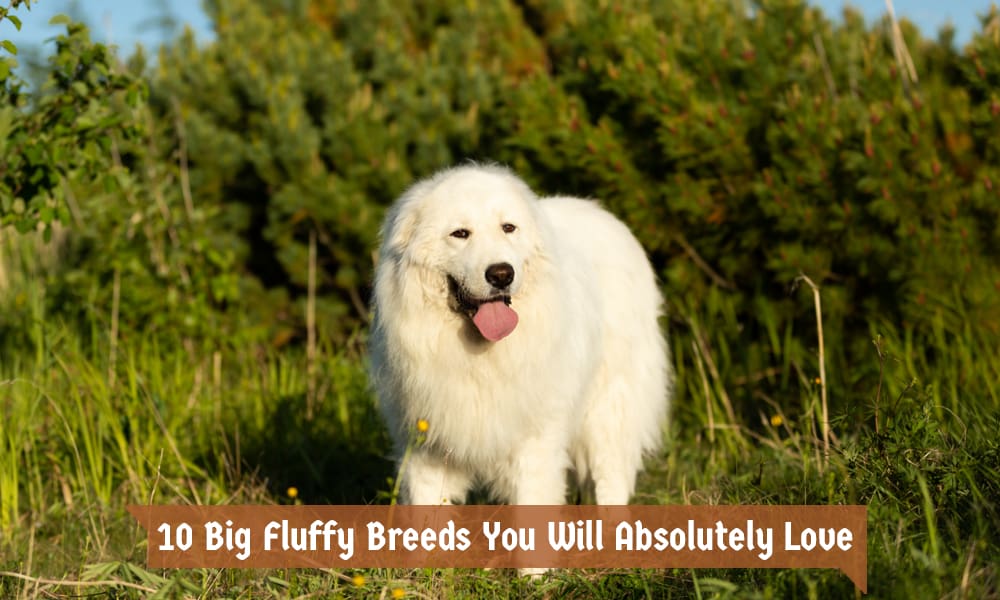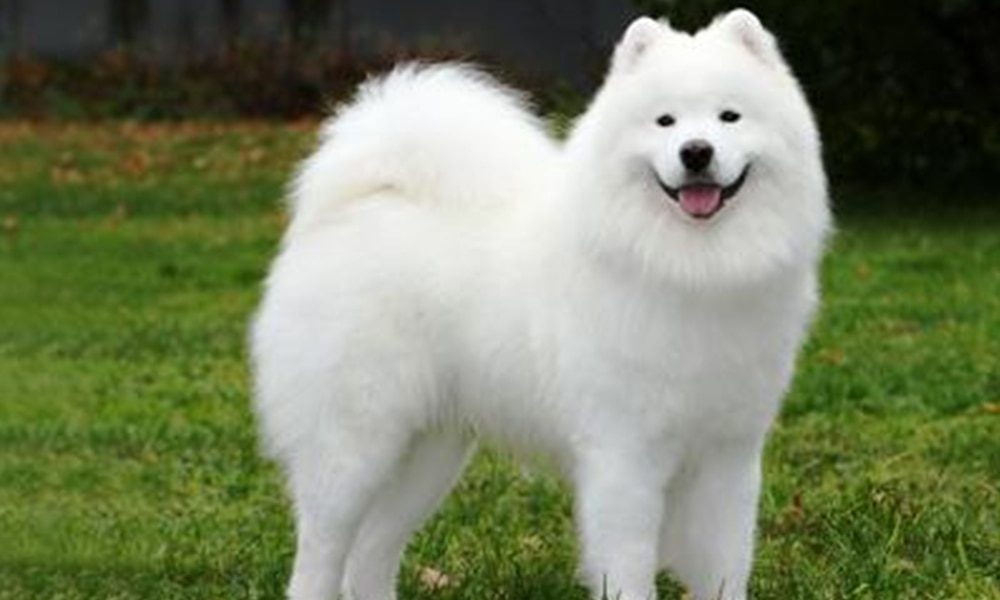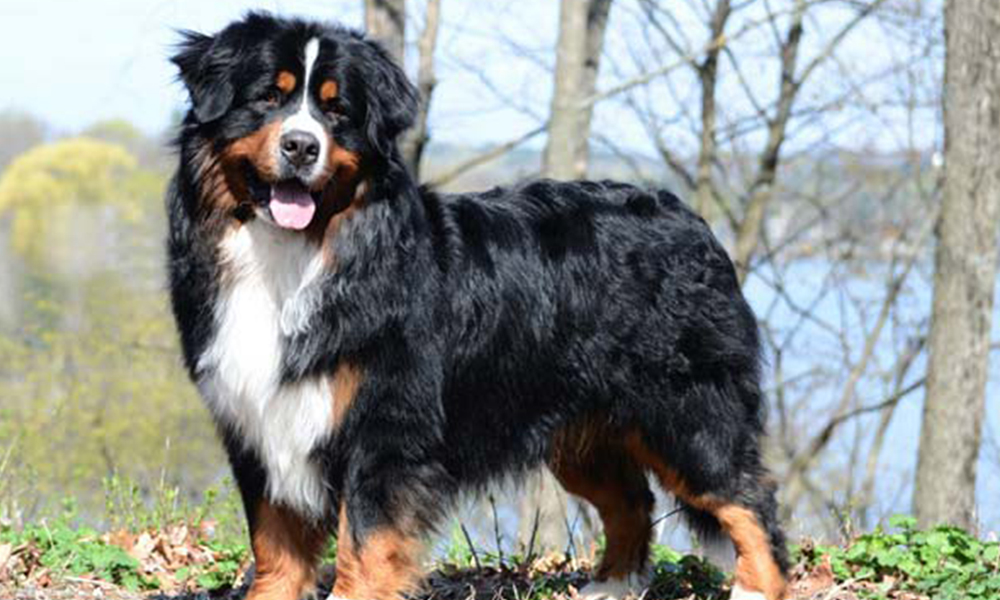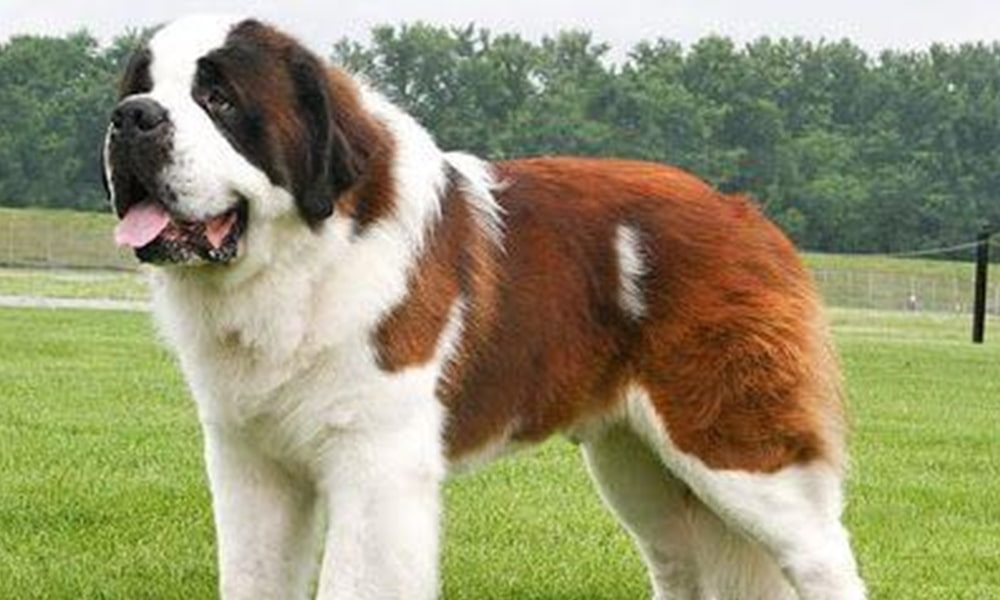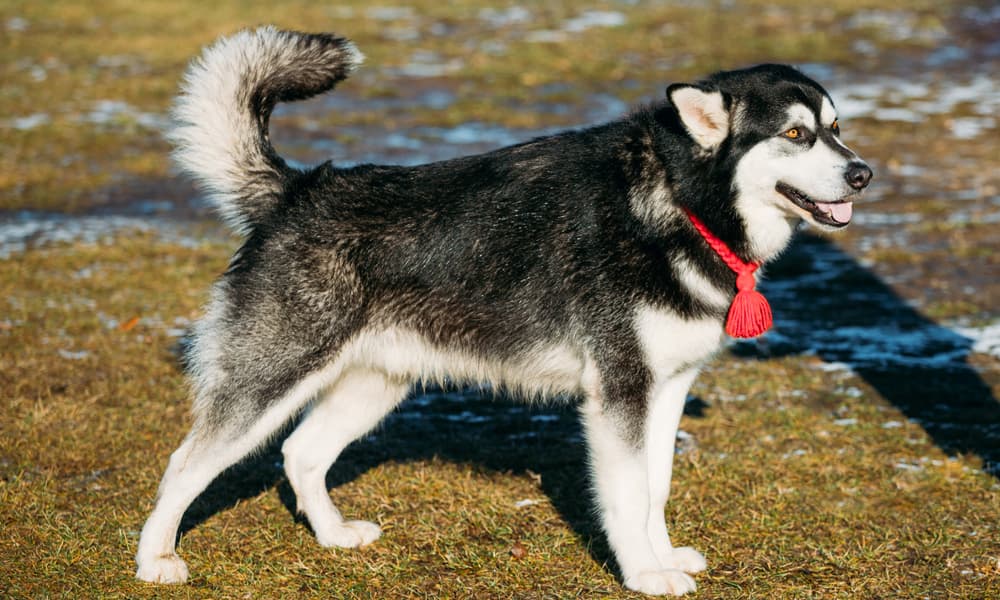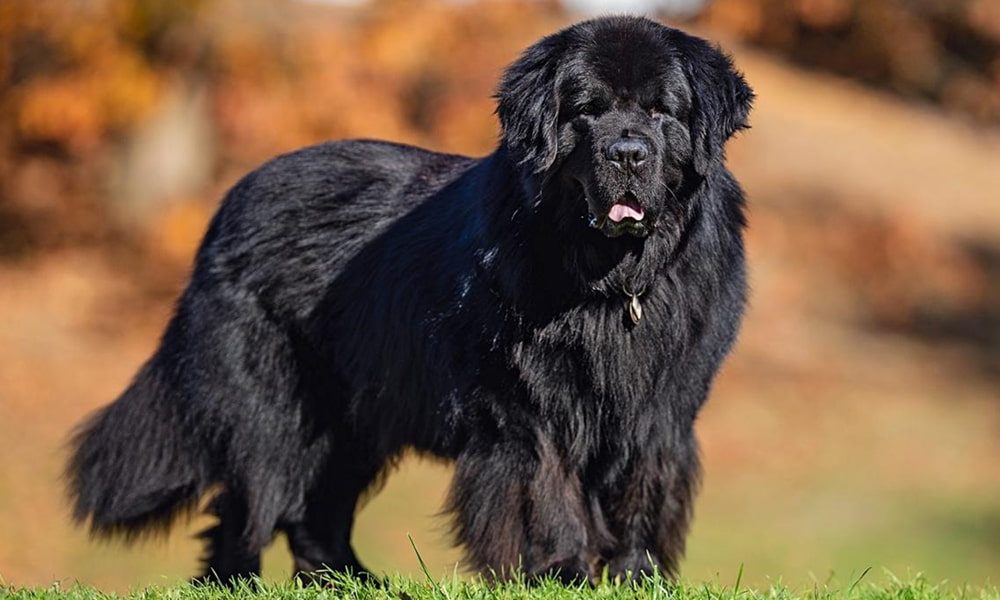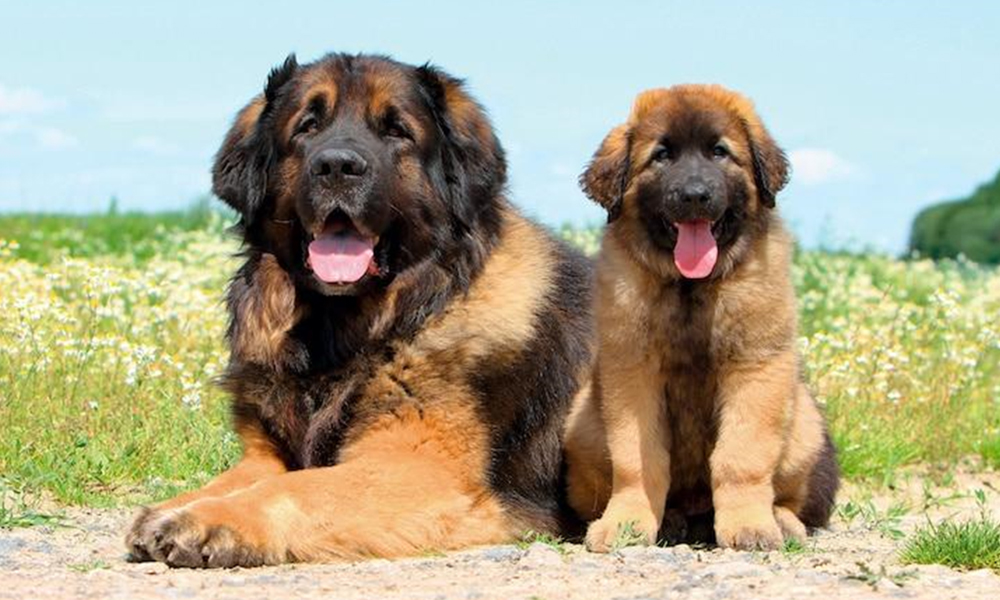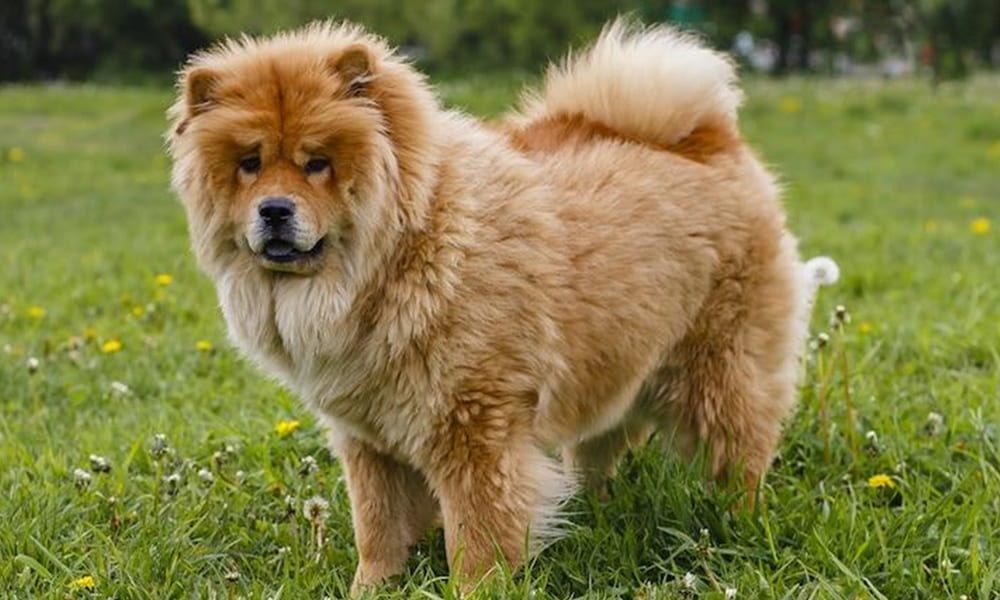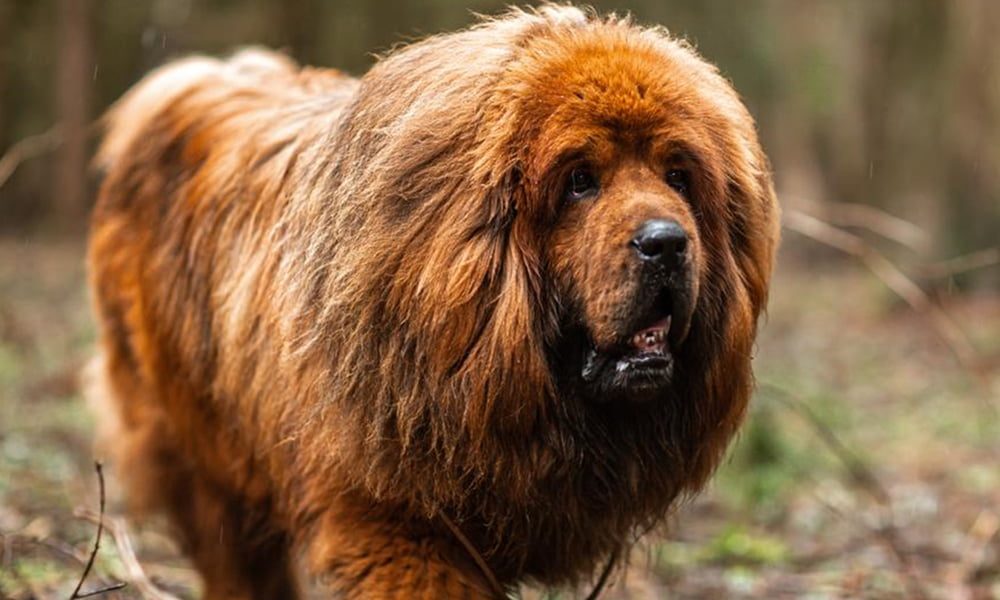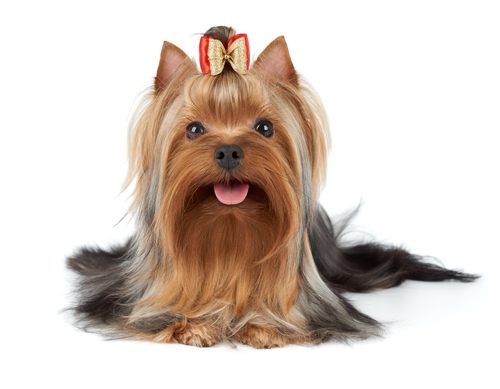There is nothing quite like cuddling up with a big fluffy dog after you have had a stressful day. While maintaining their long and thick coats can be a lot of work, we believe it is definitely worth it! If you are one of the many people that prefers a big furry dog, you will be happy to learn that there are many breeds to choose from.
To help you find the perfect canine companion, we are going to go over 10 of our favorite big and fluffy breeds. Get your grooming brush ready because you are going to love these big fluffy dog breeds!
Contents
1. Old English Sheepdog
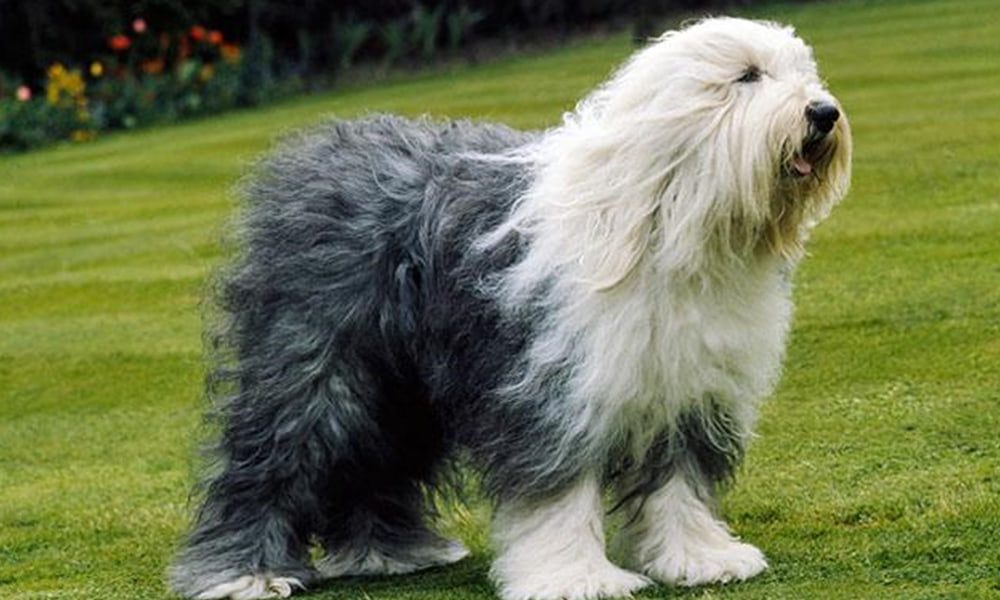
When most people picture a big fluffy pooch, the Old English Sheepdog is one of the first breeds that springs to mind. These large and muscular dogs were bred as herding dogs, so they are very energetic and intelligent. While their cuddly and affectionate nature is part of the reason why so many people love this dog breed, it is their iconic shaggy coat that really catches the eye.
They tend to weigh somewhere in the region of 100 pounds, so they are classed as a large breed dog. Their fluffy coat has a unique gray and white coloration that really sets them apart. Their unmistakable coat is so thick and flowy that most Old English Sheepdogs appear even larger than they actually are.
In terms of temperament, this fluffy dog breed is extremely playful. As is often the case with any herding dog, they have high energy levels and are better suited to more active families. With that said, these easy-going dogs also enjoy cuddling up, so don’t be surprised if your big pooch behaves like a lapdog.
Unfortunately, this breed is at risk of developing some fairly serious health conditions, including hip dysplasia and hypothyroidism. They also have a heightened risk of progressive retinal atrophy and cataracts, so you may want to have your Sheepdog’s eyes examined by a veterinarian on an annual basis.
While they tend to be really friendly, you should consider enrolling your Old English Sheepdog in some basic obedience classes, as they can be somewhat stubborn, especially if they do not get enough exercise. As mentioned, they are a fairly intelligent breed, so you should not encounter any issues during your training sessions.
The fur tends to grow over the eyes, which looks cute, but you can trim it back to improve eyesight. As you should expect with any large breed dog with a shaggy coat, they can be a lot of work. You should plan on spending a significant amount of time grooming your Old English Sheepdog, and you might want to invest in a good vacuum!
2. Samoyed
Given that these dogs are sometimes called “cloud dogs”, it should be no surprise that the Samoyed ended up on our list of big fluffy dogs. These dogs tend to weigh somewhere in the region of 50 to 60 pounds, so they are classed as a large breed. They have some of the softest and fluffiest furs of any dog breed, so anyone who likes furry dogs will love Samoyeds.
Samoyeds originated in Siberia as working dogs. They hunted, carried packs, pulled sleds, and even herded reindeer, so they are very energetic and enthusiastic dogs. While their iconic, cloud-like, white fur sets Samoyeds apart, they are also known for their big smiley faces. The corners of a Samoyed’s mouth naturally turn upwards, so it always looks like they are in a happy mood.
Just like the Golden Retriever, the Samoyed is an incredibly friendly-looking fluffy dog breed. Luckily, Samoyeds are just as affectionate and friendly as they look! As long as you do not mind some shedding and plenty of loose hairs on your clothes, you will get along just fine with a Samoyed!
In terms of behavior and temperament, Samoyeds have a reputation for being intelligent, affectionate, and social. For these reasons, they make excellent family dogs. Many families with small children will choose a Samoyed because of their non-aggressive nature.
While the snow-white coat is stunning, it is a lot of work. Since they were bred to work in one of the coldest environments on Earth, they have a thick double coat, which tends to shed quite heavily during the warmer months. To avoid hot spots and serious tangles, you must thoroughly groom your Samoyed’s coat regularly. Training can also be somewhat challenging, as they can be such an energetic breed.
Unfortunately, Samoyeds also have a heightened risk of developing glaucoma and other eye-related conditions. They are also at risk of hip dysplasia, which tends to be the case with most large breed dogs. Diabetes can also be a risk, so make sure you keep your dog at a healthy weight by choosing a balanced dog food and giving your Samoyed plenty of walks.
Samoyeds are amazing dogs, and they certainly fit the bill for a large fluffy pooch, but they can be a lot of work, so make sure you know what you are getting into before you decide.
3. Bernese Mountain Dog
The Bernese Mountain Dog is another one of those stunning breeds that many people think of when they try to picture a big fluffy dog. People bred them as working dogs in the mountainous farmlands of Switzerland. While their original purpose was to pull carts up steep hills and protect livestock, people also bred them to act as loyal companions, which explains why they are now such popular family dogs.
They almost always have a calm and friendly nature, and they can be incredibly playful. Like other working dog breeds, they tend to be fairly intelligent and energetic. Aside from their loyal and affectionate temperament, another breed highlight is that Bernese Mountain Dogs are incredibly easy to train. On average, a Bernese Mountain Dog will weigh between 70 and 115 pounds, so they are quite a large breed.
They are very social and can suffer from canine separation anxiety if they are neglected or left alone for too long, so you should keep this in mind if you work long hours outside of the home.
While Bernese Mountain Dogs are incredibly beautiful dogs, they are also at risk of numerous health problems, including certain types of cancer and gastric torsion. Sadly, they also tend to have a relatively short lifespan; however, advancements in veterinary care are beginning to increase the average lifespan of Bernese Mountain Dogs. To make sure your Bernese Mountain Dog lives a long and healthy life, you must choose healthy, breed-appropriate dog food and make sure that your pooch gets plenty of exercises.
It is also worth noting that Bernese Mountain Dogs are extremely gentle, so they can be an excellent choice if you have small children. With that said, their coats require serious attention, so you should get used to the idea of brushing and bathing a big furry dog on a very regular basis.
If you are looking for a dog that will be friendly towards just about anyone it meets, you cannot go wrong with a Bernese Mountain Dog. While they have their health risks, these big, affectionate dogs truly are irreplaceable!
4. Saint Bernard
Saint Bernards are lovable giants that can become valued members of any family. Their beautiful coloration, endearing personality, and calm nature explain why Saint Bernards continue to be such a popular breed.
Unlike some of the working breeds on our list, Saint Bernards have fairly modest exercise requirements. They tend to overheat and tire, so two or three short walks a day should be enough. With that said, they do like sitting outside, so a large backyard will help you keep your Saint Bernard happy.
The cliche image of a Saint Bernard is a savior that rescues lost travelers from the mountains. While these dogs were certainly used for rescue purposes in their native Switzerland, the image continues to resonate because Saint Bernards are such gentle and caring dogs. They are incredibly affectionate and patient, so they can be a great option for families with small children. Saint Bernards are so mild-mannered that they are often used as therapy dogs.
Training and socialization can begin at a young age, as Saint Bernard is a fairly intelligent breed. While the coats are beautiful, they are a lot of work. You need to brush them often, and they can shed a tremendous amount during the spring and summer. Unfortunately, they also have a heightened risk of eye problems, hip dysplasia, and certain cancers, particularly osteosarcoma.
These massive dogs can grow as large as 180 pounds, so make sure you have enough room in your home. If you can provide the space the breed requires and you are willing to put in some work with a grooming brush, a Saint Bernard can be the perfect family dog.
5. Alaskan Malamute
You can classify the Alaskan Malamute as a big and fluffy breed. As for appearance, they are often confused with Siberian Huskies, but the significant difference between the two breeds is their size. Alaskan Malamutes are huge! Alaskan Malamutes can weigh nearly two times as much as a Husky. A typical Husky will weigh around 40 or 50 pounds, a Malamute can weigh as much as 110 pounds!
Since they were bred as sled dogs, this enormous breed is incredibly energetic, which also means they require plenty of exercises each day. For this reason, they can be a bit of a handful. They can become anxious and destructive when they are left alone for long periods, so you may want to hire a dog walker if you plan to be away from home for a few hours.
In terms of temperament, they can be excellent companions, as they tend to be friendly; however, they are better suited to active families that are home most of the day. They also need plenty of space to roam, so a big backyard and nearby dog-friendly hiking trails are a major plus.
Their big and fluffy coats are soft to the touch, but they do shed a significant amount. Their incredibly thick double coat needs to be brushed often, so you will need to invest in some high-quality grooming tools.
While Alaskan Malamutes are not suitable for first-time dog owners, their intelligence and friendly nature can make them a wonderful choice for those willing to put in the work. Fortunately, they are fairly easy to train, which is a testament to the breed’s intelligence. It is also worth noting that Malamutes can be very loud, as their close relation to wolves means they enjoy howling and barking, especially at night.
In terms of health risks, Alaskan Malamutes are prone to cataracts and hip dysplasia. Some Malamute puppies can also be born with a genetic disorder called chondrodysplasia, which causes deformities and a form of dwarfism.
While Malamutes are undeniably beautiful dogs, you might want to hesitate if you are unsure if you can meet their various needs. With that said, experienced dog owners looking for a big, fluffy, wolf-like pooch will not be disappointed with a Malamute!
6. Newfoundland
Newfoundland is one of the largest dog breeds. They originated in Newfoundland, Canada as working dogs that could help haul lumber and fishing equipment.
As you would expect, these dogs are incredibly powerful. Despite their incredible strength, Newfoundlands people generally consider them gentle giants as they tend to be a very calm and friendly breed. Newfoundlands, or Newfies as they are affectionately known, can be wonderful family dogs.
While they can be born with white, gray, or brown fur, most Newfies have the more iconic jet-black, shaggy fur. Their thick double coat is incredibly soft, so it is perfect for those looking for a big fluffy dog they can snuggle up to.
In terms of temperament, Newfoundlands are usually very mellow. They have a calm demeanor and a really strong work ethic. Since they were originally bred as working dogs, they need plenty of exercises and mental stimulation. If you live near an open body of water, you will quickly learn that Newfies love to swim! Just like Portuguese Water Dogs and Duck Tolling Retrievers, Newfies have large, webbed toes, so they are impressive and enthusiastic swimmers.
It is worth noting that Newfoundlands can be pretty messy dogs. Their thick coats are very prone to shedding, and they can be a little bit slobbery. If you want to keep your Newfie’s coat in good condition, you might need to hire a professional groomer. As mentioned, you will also need to take your Newfie on plenty of walks; otherwise, you could be dealing with a very large and very anxious dog. They are also susceptible to a few eye-related health issues, including cherry eye and cataracts. Hip and elbow dysplasia are also major concerns with this breed.
While they are not for everybody, Newfies can be outstanding companions. If you are looking for a big fluffy pooch that can accompany you on all of your outdoor adventures, you should take a closer look at Newfoundlands!
7. Leonberger
The Leonberger is another massive breed. It is not unusual for Leonbergers to reach 170 pounds, so prospective owners must have enough room in their homes to support such an enormous pooch!
These dogs almost look like a cross between Newfoundland and Saint Bernard and are a great choice if you like the physical characteristics of a Newfie and the coloration of a Saint Bernard. They also tend to have a beautiful, lion-like mane around their neck. The breed originates from Germany where they were bred to act as energetic farm dogs.
Leonbergers are almost always friendly and affectionate dogs. They do well with children and other dogs, especially if they have undergone proper socialization training. While they might look a little bit dopey, they are very intelligent dogs, which also means they are fairly easy to train.
Leonbergers need plenty of exercises and enjoy spending as much time outside as possible. For this reason, they are best suited to active families that have large backyards. Without proper training, they can be somewhat destructive, which is a symptom of boredom rather than outright aggression. They are also fairly messy, as they are heavy shedders and enjoy getting wet and splashing around in mud puddles. They also love digging, so be prepared for dirty paws and holes around your property.
Their long water-resistant double coat is soft to the touch, but it needs brushing regularly if you do not want it to tangle. Unfortunately, Leonbergers have many health risks, including hip and elbow dysplasia, eye diseases, and a heightened vulnerability to certain types of cancer.
Leonbergers are beautiful dogs that can make wonderful pets, but they can be somewhat challenging. Their thick coats are a lot of work, and they need lots of exercises. You should begin training as young as 8 weeks, as a poorly behaved Leonberger can be a real handful. When trained properly, a Leonberger can be a wonderful pet, just make sure you are up to the challenge!
8. Chow Chow
The Chow Chow is a really distinctive-looking breed. Their scrunched faces, bushy fur, lion-like mane, upturned tail, and bluetongue makes Chow Chows more recognizable than just about any other large breed.
Not only do Chow Chows have a unique appearance, but they can also have a slightly unusual temperament. They are not overly affectionate and prefer to keep their distance. With that being said, they can be incredibly loyal dogs, as they usually form a strong bond with one person or family. Chow Chows can also be somewhat territorial, but this trait can be improved with proper training.
Chow Chows can weigh over 70 pounds, so they certainly qualify as a larger breed. They have a thick coat that bundles around the neck and shoulders. The fur usually grows out in a distinct reddish-brown color, which can give them a bear-like appearance.
This breed originated in China where they were considered royal dogs, so it is not surprising that they have a very aloof temperament. They are very reserved and independent, which has led many people to compare their behavior to that of a house cat. They do not require a lot of exercises but make sure that you have enough space in your home and backyard for a large dog that likes to spend time alone.
They are susceptible to some of the common health issues you find with large breeds, like hip dysplasia, skin allergies, and eye disease. A proper breed and life-stage appropriate diet will help you keep your Chow Chow in good health.
If you are looking for a fluffy, unique-looking pooch with an independent yet loyal nature, you cannot go wrong with a Chow Chow!
9. Tibetan Mastiff
The Tibetan Mastiff is the largest and most uncommon breed on our list. These massive dogs have incredibly soft and fluffy fur and surprisingly gentle nature. They can be incredibly affectionate and child-friendly, but they are not a great choice for first-time dog owners, as they require a significant amount of work and training.
Their noble appearance and enormous size almost always turn heads, but they can be very independent, which means they will not always listen to your commands. This is part of the reason why they are better suited to more experienced families.
When they are trained properly, Tibetan Mastiffs can be extremely loyal and gentle. As you would expect with such a large breed, they need a lot of indoor and outdoor space. They can also be fairly loud, as they like to make their presence known. They need a fair amount of exercise, but they should always be walked with a leash, as they tend to choose their own routes.
While they can look like giant teddy bears, these dogs can grow to 160 pounds, and they can be quite bossy, so you need to be prepared for a dog that requires patience and respect. While they are usually gentle and friendly, they can be very stubborn and loud. Their bushy coats also require frequent brushings, so they can be a lot of work.
While a Tibetan Mastiff can be classed as the ultimate big and furry dog, you need to prepare for the unique challenges the breed can pose.
10. Great Pyrenees
The Great Pyrenees were originally bred in France to protect livestock, so they tend to be very intelligent, brave, and loyal dogs. They can weigh as much as 160 pounds and are characterized by their lengthy white fur. In terms of appearance, they almost look like a larger version of a Golden Retriever.
They tend to have a gentle and affectionate temperament, which makes them great family dogs. While they can be a little bit standoffish towards unfamiliar people and dogs, proper socialization training can help.
They are major shedders, so you will need to use a grooming brush regularly. Since they were bred to protect livestock, they are really intelligent and have an outstanding sense of hearing. While they can be very friendly, they are also fairly independent. They enjoy spending lots of time outdoors, so make sure you have a large backyard before considering this breed.
While they can look somewhat intimidating, they are a fairly calm breed that can become extremely devoted towards their family. The Great Pyrenees breed is susceptible to gastric torsion and patellar luxation, so regular checkups with a veterinarian are recommended.
Overall, the Great Pyrenees is a stunning breed that can be a wonderful companion dog. Their large bodies, friendly demeanor, and fluffy coats make them one of the more popular large breeds.
Final Words
Nothing beats cuddling up with a big fluffy dog, but they can be a lot of work. If you are up to the challenge, a large dog with a thick coat makes an excellent companion. Just make sure you read up on your preferred breed before you commit. While all puppies are cute, certain breeds are more difficult to raise than others, so just be sure to do your research!
I grew up in a household that was filled with animals. I believe that my fate as a dog-loving person was sealed in early childhood since my parents owned several dogs of varying sizes and breeds. There was no choice but to take care of and learn about dog habits and the best animal care practices — otherwise, I’d be clueless about how to go about the creatures I was surrounded by day and night.
As a life-long puppy lover, I know a thing or two about dogs and how to go about caring for them in the best way possible. Although I’m not a professionally trained dog behaviorist, trainer, or veterinarian, all of my knowledge and experience with canines comes from a place of love and a deep-rooted passion for dogs and animals in general.
Seeing as dogs kept me company throughout every stage of my life, I decided to follow a different path in my academic life and obtained a Bachelor’s and Master’s degrees in Marketing Management and Digital Advertising, which ultimately allowed me to combine my professional training and personal experience by creating the ultimate dog lover’s resource website! Along with my husband, Dave, I run MySweetPuppy for like-minded dog lovers who want to have a single, clear, and reliable information source about anything and everything related to dogs and their well-being.

